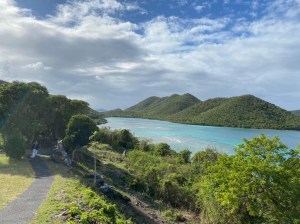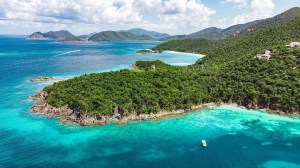The Enchanting History of Virgin Islands National Park in St. John, USVI
Nestled amidst the crystal-clear waters of the Caribbean Sea lies a tropical paradise known as the Virgin Islands National Park. Located on the idyllic island of St. John, in the United States Virgin Islands (USVI), this national park holds a rich history dating back centuries. From its indigenous inhabitants to its colonial past and remarkable conservation efforts, the park stands as a testament to the island’s natural beauty and cultural heritage. Join us as we embark on a journey through time to explore the captivating history of Virgin Islands National Park.
Ancient Inhabitants
Long before European explorers arrived, the Virgin Islands were home to the Taíno people, an indigenous group that thrived in the Caribbean. These native inhabitants lived off the bountiful resources provided by the land and sea, leaving behind traces of their culture through archaeological sites scattered across the island. Petroglyphs, pottery fragments, and shell middens are testament to their presence and way of life, offering valuable insights into the island’s earliest history.

Views from the old Annaberg Sugar Plantation
European Exploration and Colonial Era
In 1493, Christopher Columbus became the first European to lay eyes on St. John during his second voyage to the New World. Over the next few centuries, various European powers, including the Dutch, Danish, English, and French, would lay claim to the island. The Danish West India Company eventually established a presence on St. John in the late 17th century, establishing sugar plantations and importing enslaved Africans to work on them. The remnants of these plantations can still be seen within the national park today.
Creation of Virgin Islands National Park
In the early 20th century, the natural beauty of St. John attracted the attention of philanthropist Laurence Rockefeller. Recognizing the need to preserve the island’s pristine environment, Rockefeller purchased large tracts of land and donated them to the US government. In 1956, Virgin Islands National Park was established, encompassing approximately 60% of the island. Today, the park spans over 7,000 acres of lush forests, stunning beaches, and vibrant coral reefs.
Conservation Efforts
Virgin Islands National Park is not only a testament to the island’s history but also a remarkable conservation success story. The park’s marine ecosystem, including its coral reefs, seagrass beds, and mangrove forests, is protected under the National Park System. Efforts to preserve and restore these fragile habitats have been instrumental in maintaining the park’s ecological balance and biodiversity. Visitors can witness the underwater wonders through snorkeling, diving, and boat tours, while nature trails offer glimpses of the island’s diverse flora and fauna.
Cultural Heritage and Recreation
Beyond its natural splendor, Virgin Islands National Park also celebrates the cultural heritage of the region. The Cinnamon Bay Archaeological Museum showcases artifacts from the island’s indigenous past and colonial era, providing a glimpse into the island’s rich history. The park offers a range of recreational activities, from hiking and camping to swimming and sunbathing on pristine beaches. Trunk Bay, with its famous underwater snorkeling trail, has become an iconic symbol of the park’s beauty.

Beautiful views of the Virgin Islands National Park, North Shore St. John.
As we conclude our journey through the captivating history of Virgin Islands National Park, we are reminded of the remarkable stories embedded within its picturesque landscapes. From the indigenous Taíno people to the colonial era and the park’s current role in conservation, the park serves as a testament to the island’s cultural heritage and the importance of preserving natural ecosystems.
